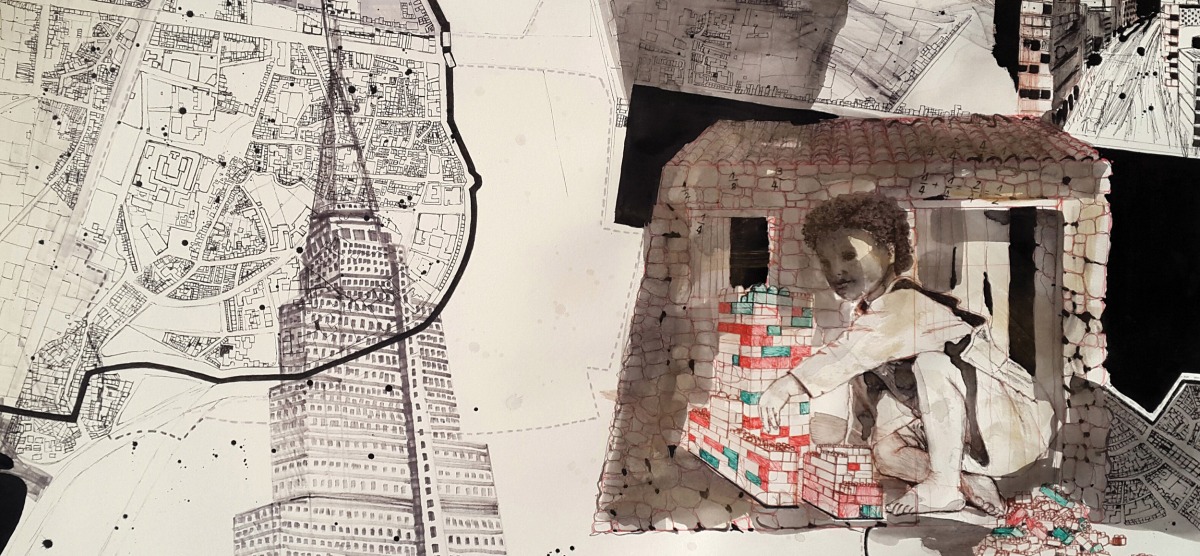
Art and the Intellect
Mariam Souali talks with the Bulletin about the interplay between her academic study and her artwork.
Mariam Souali is an artist and Fulbright scholar from Morocco visiting Bryn Mawr to work on her doctoral dissertation in history of art. In a recent conversation with the Alumnae Bulletin, Souali spoke about why she chose Bryn Mawr, the influence of her studies on her own art, and her upcoming exhibitions in Tunisia and Egypt.
Alumnae Bulletin: What made you come to Bryn Mawr?
Mariam Souali: Bryn Mawr is the place to be if you want to study history of art. It’s home to the best scholars in the field, and you can feel the presence of the influential critics, researchers, and historians who have spent time here.
As an artist, I wanted to be where I could approach history of art in an interdisciplinary way. There’s an open-mindedness here about how to pursue research, and I can mingle research and the practice of art in my thesis. It’s been enriching to take classes like Experimental Drawing at Haverford along with theoretical classes at Bryn Mawr.
Bulletin: What’s the focus of your dissertation?
Souali: I’m examining how trauma and remembrance are represented in French contemporary art, particularly in the works of Sophie Calle and Georges Perec. I’m looking at how contemporary art dealt with the traumas of war and history in the 20th century and then how those works of art can become a game between the artist and the public and express the playful nature of human beings.
Bulletin: How have your graduate studies influenced you as an artist?
Souali: For me, there’s a deep link between art and the intellect. Right now, my art is the result of what I’m reading. My latest series of drawings was influenced by game theory and the works of Johan Huizinga and Steven Johnson. So, my academic studies have had a direct impact on my imaginary world and offered me new combinations of images.
Bulletin: Tell us more about the upcoming exhibitions of your work.
Souali: My work will be part of a group exhibition traveling to Tunisia and Egypt. I’m one of seven artists from across the Arab world examining the golden age of Egyptian cinema of the 1960s and 1970s.
Cinema of that era made a big impact on the culture of the Arab world. Today, there is a lot of disillusionment and a loss of the ability to dream in the same ways that were inspired by that golden age. My series of ink drawings mingle the history of cinema with images of current disillusionment. The exhibition strives to create a new mythology, a new dream for the Arab world.
Bulletin: What’s next for you?
Souali: I’ll be back at Bryn Mawr in the fall. In addition to continuing my dissertation work, I hope to include my art in exhibitions here in the U.S.
Published on: 05/10/2017